As I have never travelled the Arab countries in the Middle East, I was very curious to visit Abu Dhabi, capital city of the United Arab Emirates. Each day it is easier and cheaper to travel the world – low-cost carrier Wizzair offers direct flights to Abu Dhabi from Tirana, 3x a week.
With a population of 1.6 million inhabitants, Abu Dhabi is the richest city in the UAE. Its name means „Father of Gazelle“ because of the abundance of gazelles in the area.
Before the discovery of oil reserves in 1958, people lived from pearl diving. Nowadays, Abu Dhabi’s combined revenues from oil royalties and overseas investments give it one of the world’s highest per capita incomes.
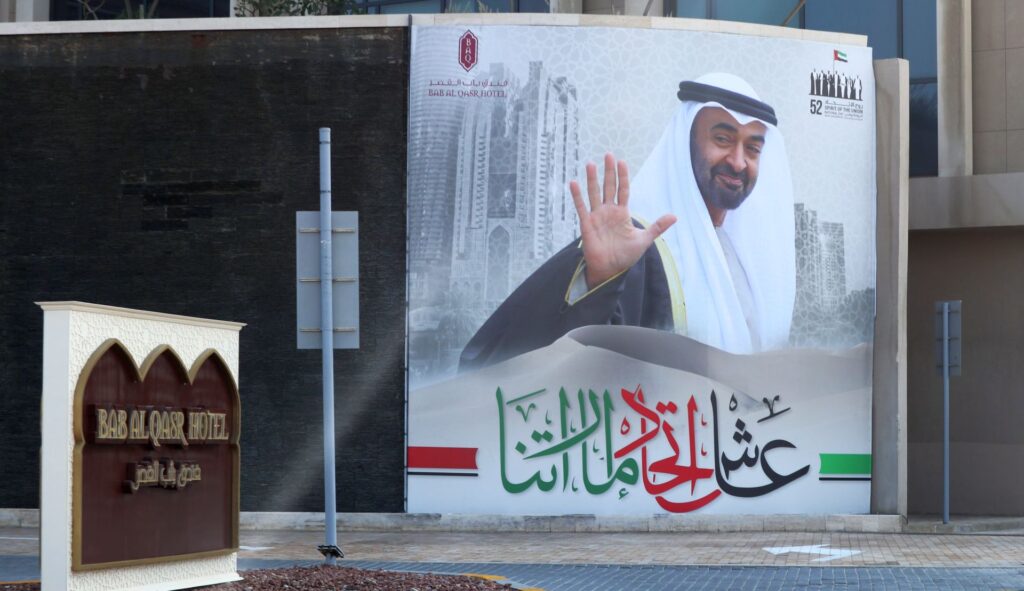
So, we took the chance to explore a totally unknown city, of course, not without having prepared ourselves thorougly, as the Emirates have strict regulations you should respect at all times! That’s why we tried to get familiar with the culture and etiquette required in the Middle East prior to our departure.
I’ll give you some examples: dress modestly, keep your knees and shoulders covered; avoid photographing governmental buildings and people without their permission; don’t drink alcohol in public places; the use of drugs is strictly forbidden and all forms of crime are heavily punished; video or social media calling (FaceTime, WhatsApp Calling, etc.) are not available.
And don’t forget the rules of PDA – Public Display of Affection – as PDA it is not appropriate in the Islamic culture! While it’s tolerable for married couples to hold hands in public (I even saw a traditionally dressed couple doing this!), kissing and hugging are considered an offense and can lead to jail time.
Many tourists visit Abu Dhabi because of the exceptional attraction parks, not to be found anywhere in the world. Just to mention a few of them: Yas Waterworld, Ferrari World, Warner Bros World, Al Ain Zoo and Aquarium…
Of course, that was not our intention. We were, above all, interested in learning more about the culture and the way of living of Abu Dhabi’s inhabitants. But there were also some attractions in Abu Dhabi we were eager to see: the Louvre museum and the Sheik Zayed Grand Mosque, for instance.
We arrived in the middle of the night and we got a room with city view in Hotel Jannah, on the 13th floor. Smoking or non-smoking? Hmm, that was quite an unusual question! And what we hadn’t expected either was the big Christmas tree in the reception hall.

When we woke up in the morning we were flabbergasted. The view through the glass wall of the room was breathtaking: dozens of high skyscrapers and in the distance the Persian Gulf with its sandy beaches.
As our hotel had a central position, it was easy to use taxi cabs for sightseeing. By the way, they were surprisingly cheap. Although there is much more to see in Abu Dhabi, we made the following selection:
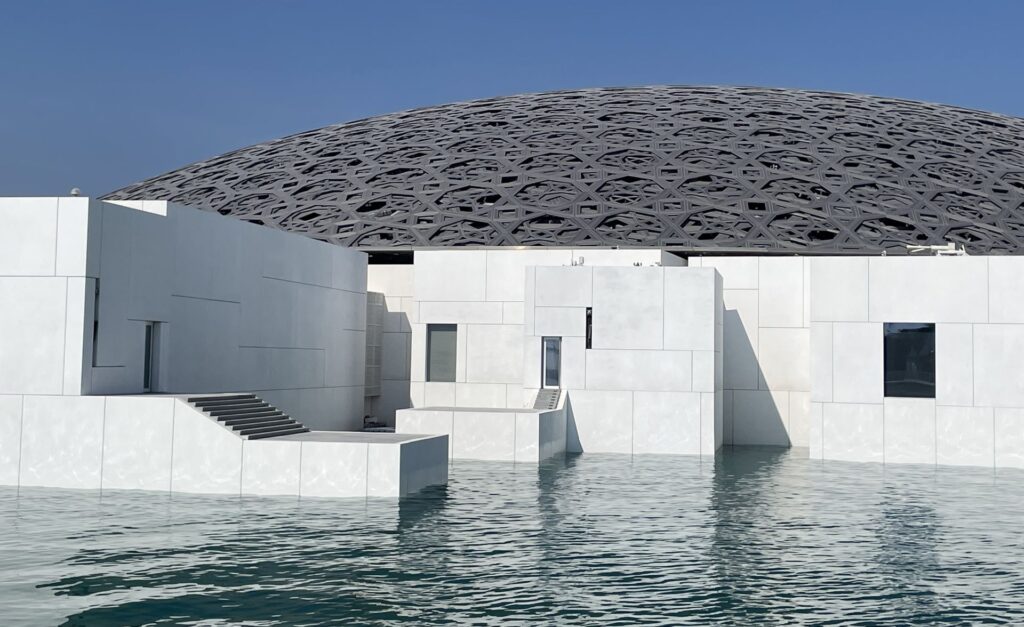
Louvre Museum: At the first sight, the modern building did not look as impressive as we had expected, although the construction had costed around 100 million €. Designed by the French architect Jean Nouvel, the building is an architectural masterpiece that consists of 55 buildings surrounded by water, with a centerpiece in the shape of a vast silvery dome that appears to float above the museum.
The art collection inside was miraculous. We could admire more than 300 works of art, varying from Leonardo da Vinci to Picasso and Van Gogh. There were 9,200 m2 of galleries to explore, with permanent and temporary exhibitions. Especially beautiful was the exhibition of Cartier jewelry inspired by the Islam.
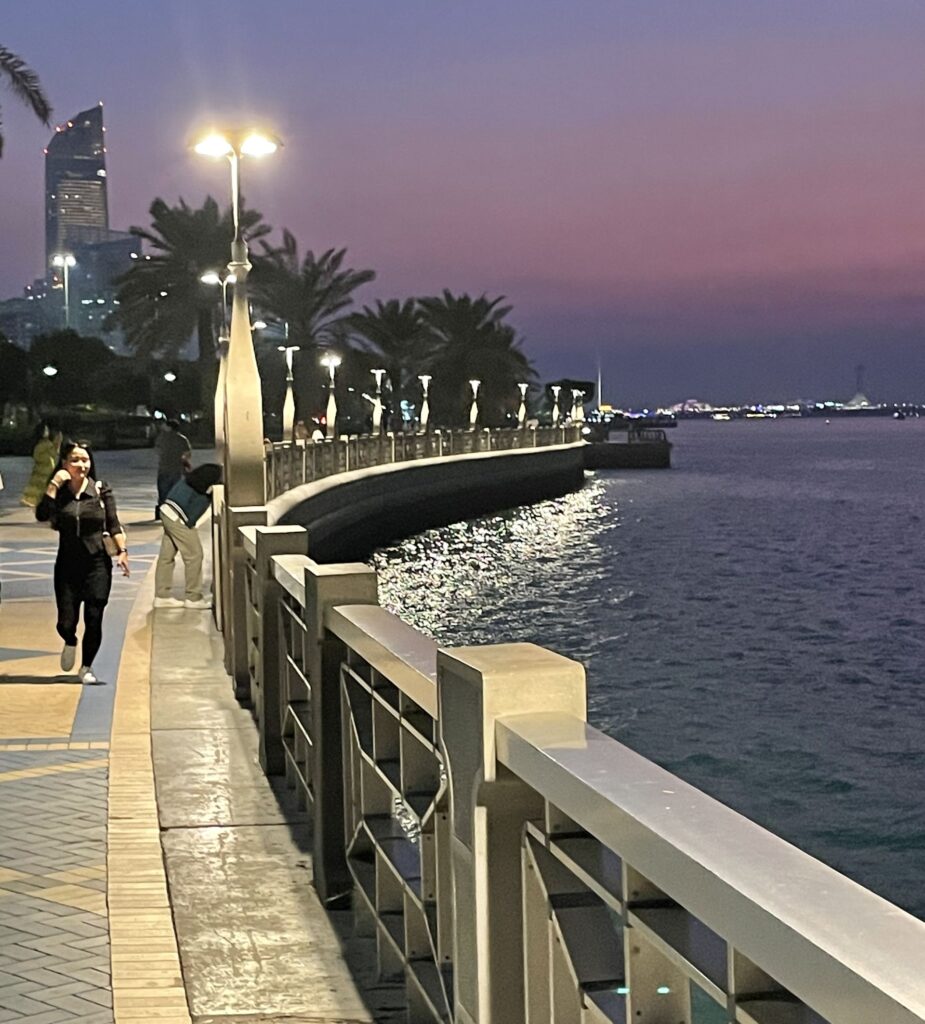
Corniche Road and Corniche Beach: This incredible promenade stretches across eight kilometers waterfront with parks, pedestrian pathways, cycle paths, and restaurants to Corniche Beach, a huge sandy beach. The 2 km long beach is divided into sections for the general public and families.
In the evening, we made long walks along the beautiful promenade, admiring the modern skyscrapers, which were nicely illuminated.
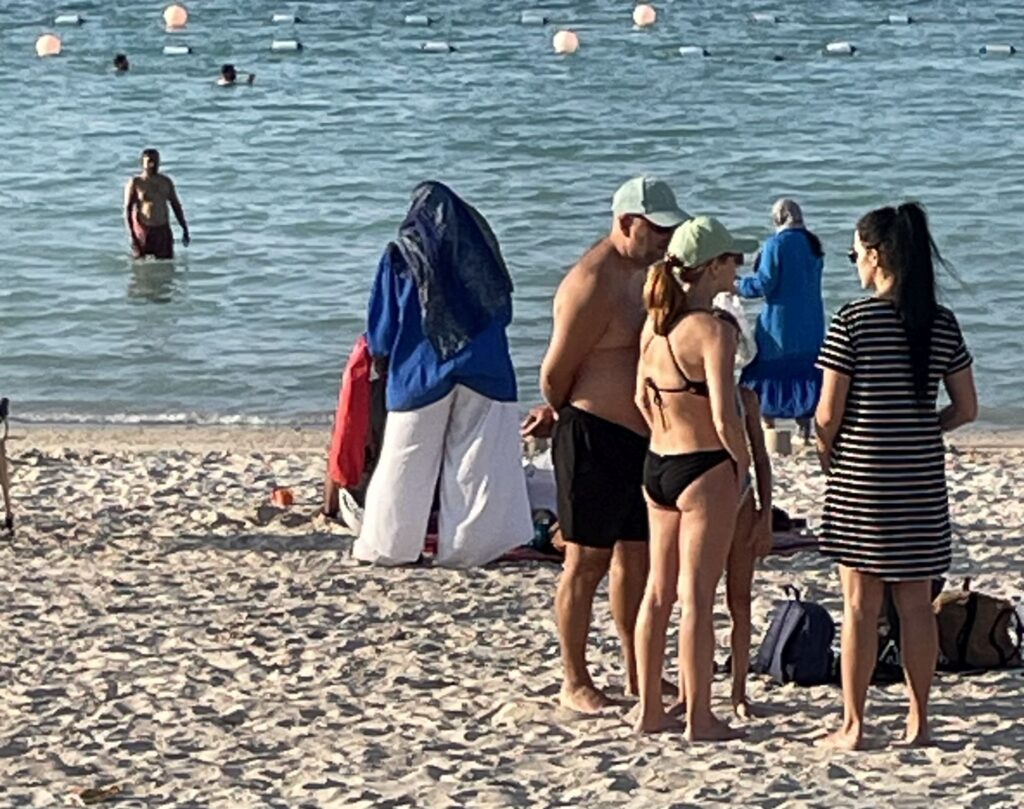
And of course, we also spent some time at an open-air terrace behind the beach, where we saw both women in traditional clothes and girls in bikini on the beach.
Marina Mall Island: On the breakwater of Marina Mall Island we visited an open-air museum called Heritage Village. This gave us an idea about the traditional way of life in the desert. We visited the old-world souk, the mosque and a camp modelled on life in pre-modern UAE.
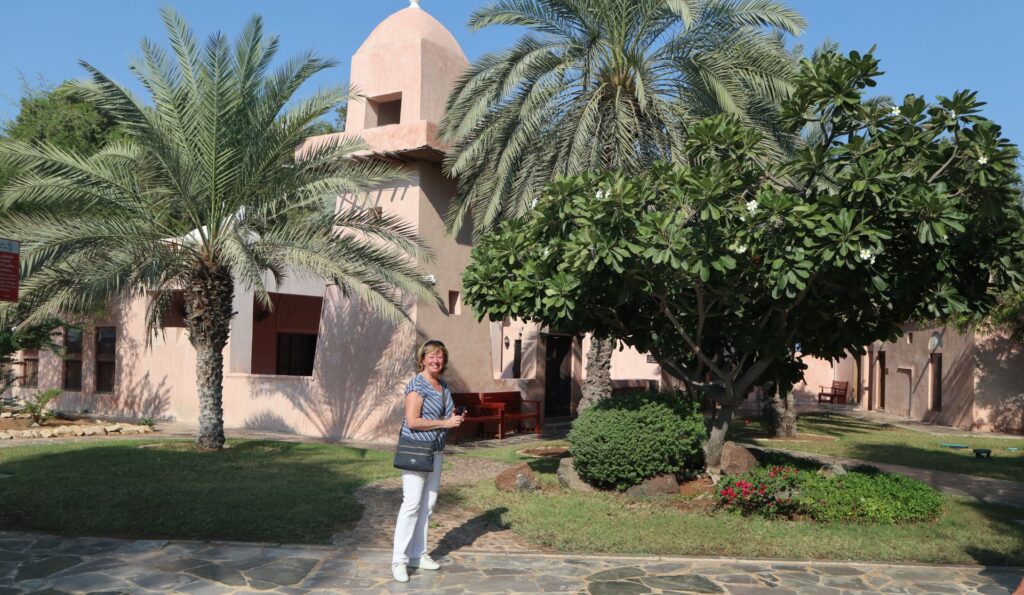
It was nice to see the workshops for traditional crafts and the little spice shop, but altogether, the village was quite run down and certainly needs new investment.
However, we were quite impressed by the huge Marina Mall nearby. This shopping mall was opened in 2001. All international brands are present here, also shops like Zara, Marks & Spencer, Mango …. Not to speak of a huge sports and entertainment center for children and a cinema.
The 5-star Rixos Hotel behind the Marina Mall appeared to be one of the most striking buildings in Abu Dhabi (see photo 1).
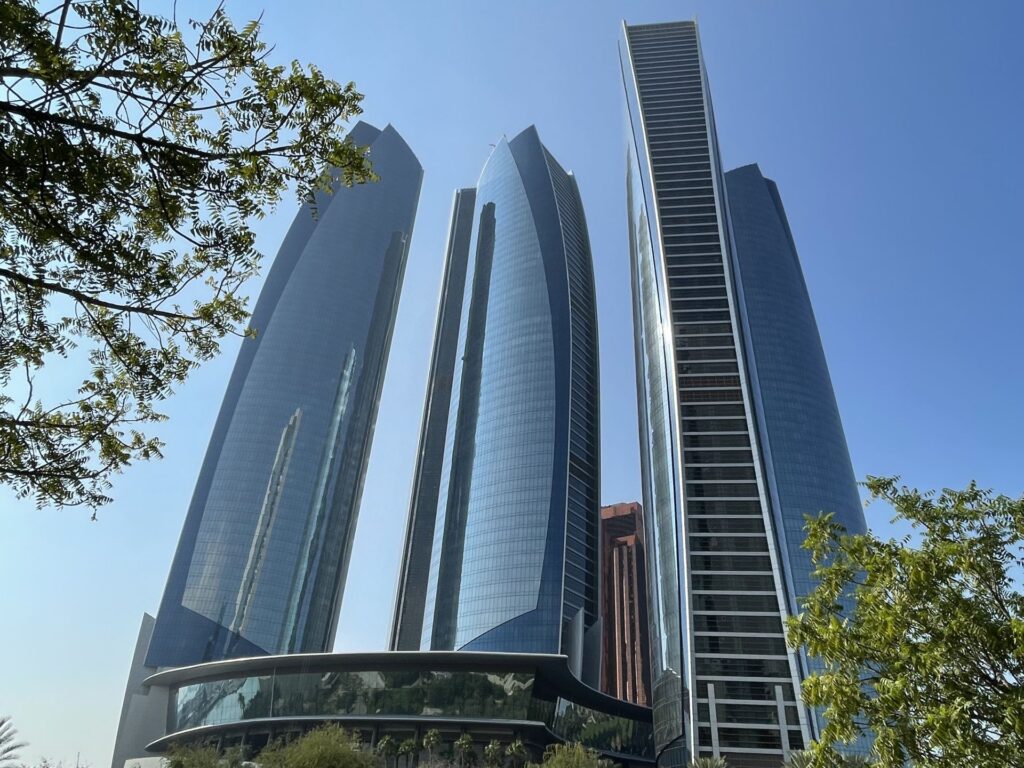
Etihad Towers – Observation Deck 300: The Etihad Towers are 5 blue skyscrapers with an altitude between 218 and 315 m. The entrance tickets for the Observation Deck 300 enabled us to reach the 74th floor with a fast lift. We got a drink and took a seat, from where we enjoyed the spectacular panorama. Walking around we got to see the Presidential Palace, the famous Emirates Palace Mandarin Oriental Hotel and Corniche Beach.
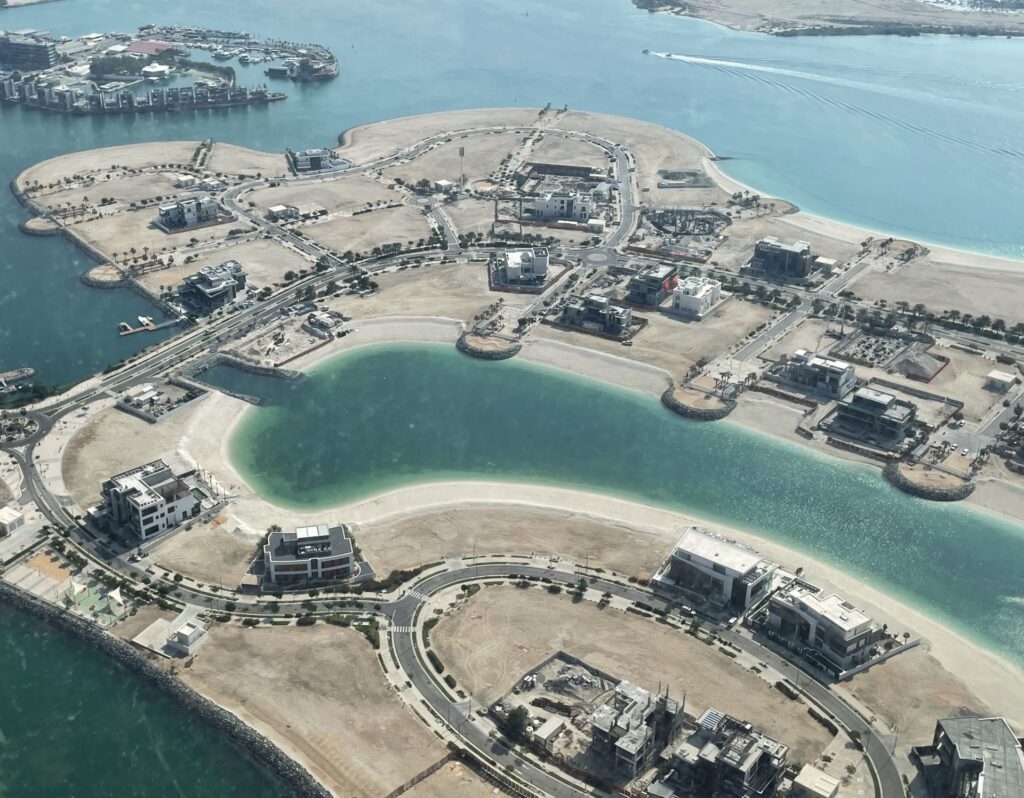
Several new sandy islands are built with new villas for the rich inhabitants, well-protected, each with a private beach.
Sheikh Zayed Grand Mosque: Unfortunately, we missed the opportunity to visit this top attraction of Abu Dhabi, one of the world’s largest and most beautiful mosques. It is unbelievable that this mosque can receive 40,000 believers. The architecture is overwhelming: gold-plated Swarovski chandeliers, a hand-knotted main prayer hall’s carpet, marble floors, four stunning minarets of 106 m high and 82 domes….. Incredible!
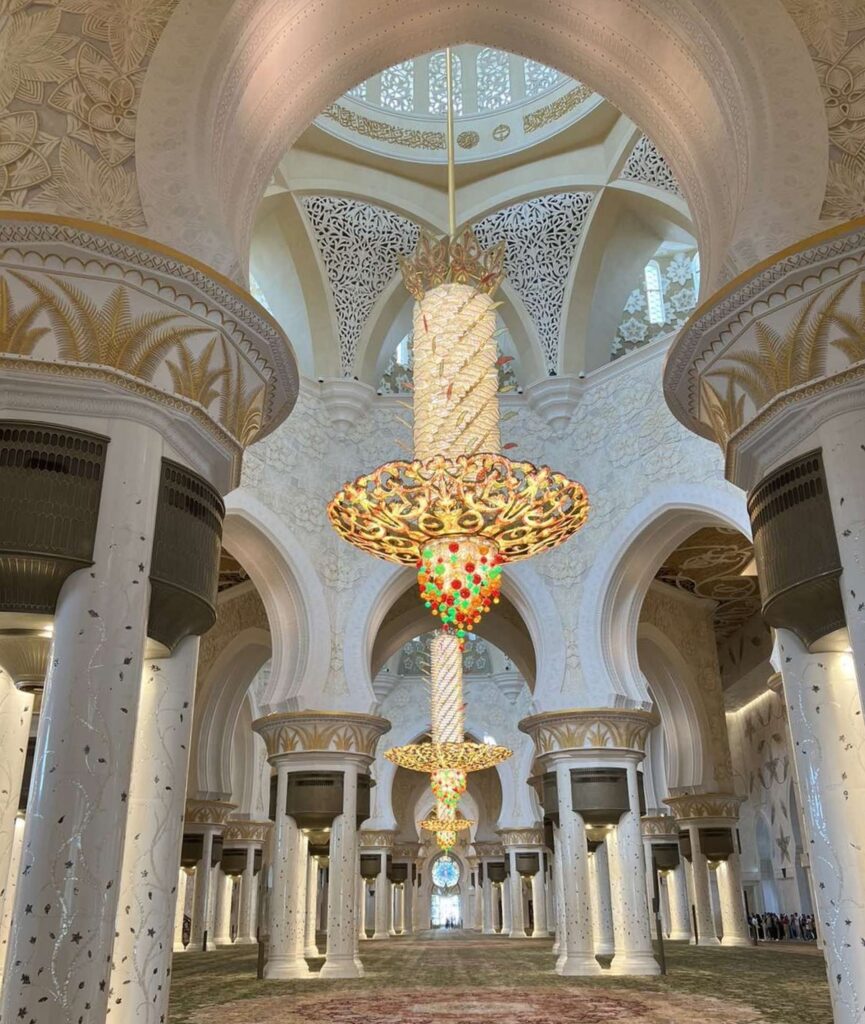
And finally, some information about the population. The native Emirati population in Abu Dhabi is estimated to be only around 18%, the rest is made up of foreign workers and their families – most of them coming from Southeast Asia.
Walking around the old center, we got a good impression about their life and work. Among the new modern skyscrapers there were also older and rather neglected buildings, obviously inhabited by migrants. The balconies were stuffed with old and rusty air-conditioning units, laundry and other items. It was clear that the summers are extremely hot here! And thus it was hard to see that people often live in „partition rooms“, i.e. rooms divided into two or three very small rooms by a thin board.
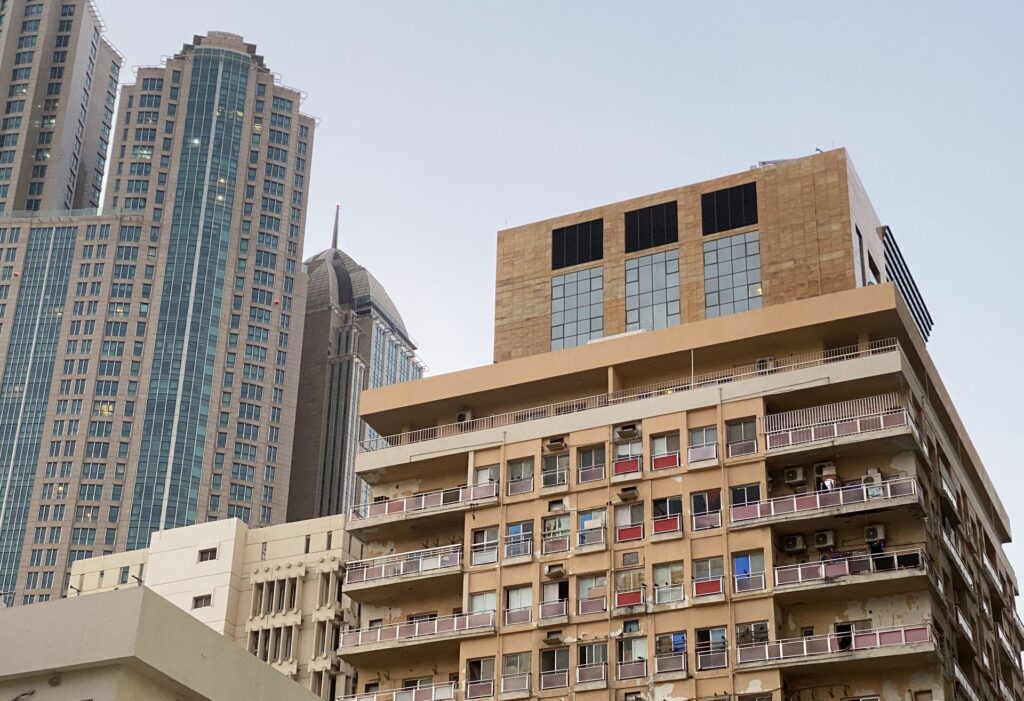
Among the buildings were some tiny mosques, which called to prayer five times a day. People were even praying on carpets around the mosques; it was rather crowded.
Of course, we asked some taxi drivers and food deliverers if they are satisfied with their life in Abu Dhabi. Well, they were all positive as they earn enough to send some money to their families in Pakistan, Shri Lanka, India, the Philippines….
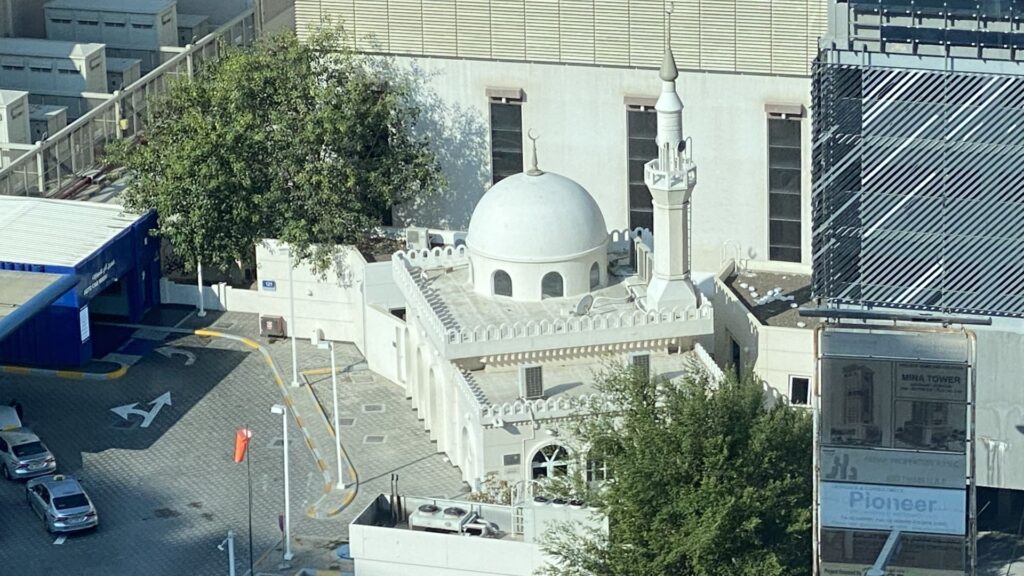
What else could I say? Luxury and comfort for the native population, hard work and relative poverty for foreign migrants. It is clear that people are not treated equally here and that is quite frustrating. But I know, that is not only the case in the United Arab Emirates!
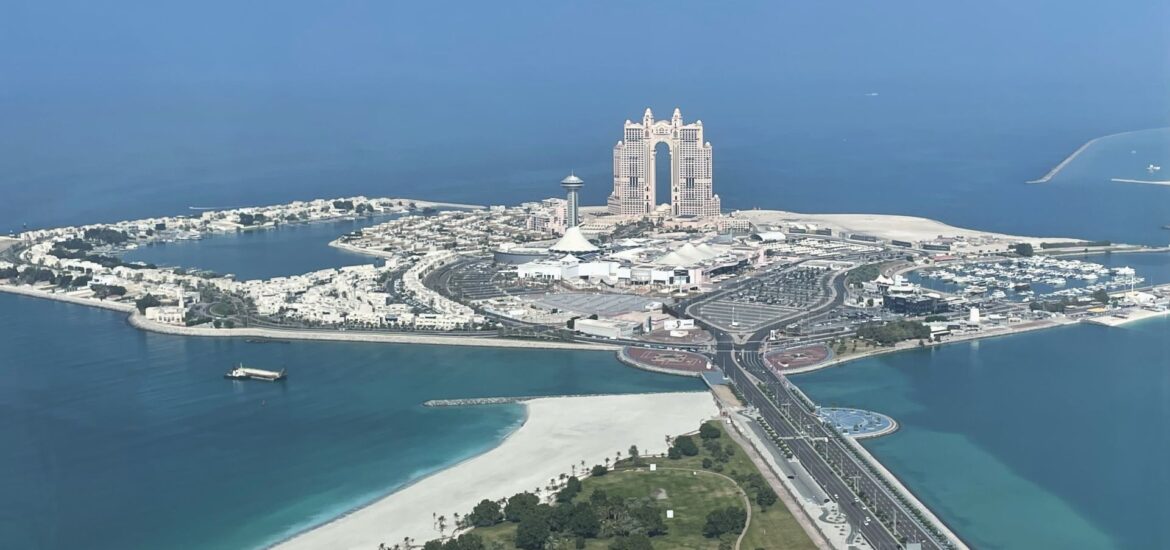
Great post Marianne!
Personally I’m not a fan of Abu Dhabi, or Dubai for that matter but loved Oman! Put it on your bucket list
Leuk en informatief geschreven stuk .Hoe was het weer daar eigenlijk in deze tijd van het jaar?
De temperatuur in onze wintermaanden is zo rond de 26-28 graden, s nachts 18-20, geen regen!